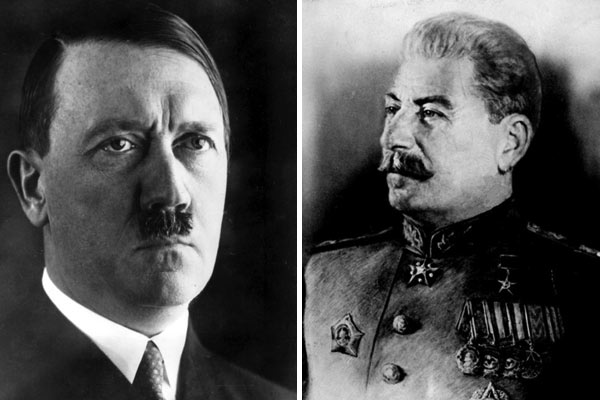 Boston | We think we understand the great German-Russian conflict of the Eastern Front of World War II. We think it was the great grudge match of the tyrants, Stalin and Hitler. We think Stalin panicked in June 1941 when his Nazi ally turned on him. We think Hitler was beaten by the same Russian winter that defeated Napoleon a century earlier. We think Stalin was steadfast in refusing to consider surrender. We think the Soviets prevailed in the greatest tank battle ever, at Kursk.
Boston | We think we understand the great German-Russian conflict of the Eastern Front of World War II. We think it was the great grudge match of the tyrants, Stalin and Hitler. We think Stalin panicked in June 1941 when his Nazi ally turned on him. We think Hitler was beaten by the same Russian winter that defeated Napoleon a century earlier. We think Stalin was steadfast in refusing to consider surrender. We think the Soviets prevailed in the greatest tank battle ever, at Kursk.Maybe not. At least that is what the historian John Mosier, who in an earlier volume shattered the myths surrounding Hitler’s Blitzkrieg, is telling us in “Deathride: Hitler vs. Stalin — The Eastern Front, 1941-1945.’’ It is a dramatic departure from the conventional wisdom and is itself a dramatic chronicle of the most brutal theater in the most brutal war in one of history’s most brutal centuries. But the real theme is even bigger than the Eastern Front, which itself stretched from the Baltic to the Black Sea.
Mosier is arguing that World War II was fought for economics, not for political or ideological reasons. That is not a new thesis, to be sure, but his is a creative approach, holding that not only the motivations but also the maneuvers of the war were almost entirely economic in nature.
Hitler, for example, wanted Poland because it was a net exporter of goods to Germany. The Allies then tried to block iron ore shipments from Scandinavia, hoping to deny the Nazis the materials required to build tanks and planes. And the whole bloody thing was a war on an economic, not a political, front. The Allies, which included the Soviet Union by war’s end, simply out produced Germany, and in fact the Third Reich was defeated by two nations that weren’t even their adversaries when the war began, the United States and the Soviet Union.
This is a clear-eyed, compelling description of a battle that has been described many times, but seldom with such an ironic eye. This monstrous war, conducted against the backdrop of the tyrants’ purges and their mechanical approaches to civilian death, was conducted in a great killing field of ethnic groups, including the Poles and other Slavic peoples, many of whom fared little better under Stalin than they did under Hitler. And these persecuted Eastern Europeans were themselves no friends of the Jews, who were virtually exterminated in this charnel house.
What emerges from these pages is a struggle between vicious Soviet bunglers with a craven leadership willing to sacrifice millions to survive versus vicious German technocrats with a leadership that didn’t anticipate the dangers of military over-extension and the advantages its rival possessed by fighting a defensive war in a primitive land with unlimited cannon fodder. That said, Mosier believes that Stalin was closer than anyone (including Stalin himself) knew to running out of men, some of whom by 1943 were getting only two days of training.


1 comments:
I was a fan of Mosier's "Myth of the Great War," and have enjoyed his following books as well. But "Deathride" is based on a statistical analysis which is simply absurd. He claims that the USSR suffered 27 million military deaths. That's 27 million soldiers, not civilians, and it's dead, not total casualties. A good rule of thumb is that a country can field an army of about 10% of its total population. The population of the USSR was 170,000,000 at the beginning of WWII, meaning they could field an army of 17,000,000 (by comparison, the USA population in 1940 was about 130,000,000, and in 1945, the size of the US military was about 13,000,000). Estimates of the size of the Red Army range from 13,000,000 to 20,000,000, not inconsistent with these ratios. And the USSR had about 41,000,000 males of military age (I used ages 15 to 49) in 1939 (per a League of Nations study). If half of the males of military age were fit to serve, and that's a
high estimate, we get 20,500,000, again not inconsistent with the
general 10% ratio. Another rule of thumb is 2 wounded soldiers for every one KIA. So how in the world could the USSR have suffered 27 million dead, implying another 54 million wounded, for a total of 81 million casualties? Even if you assume that because of poor tactics, poor equipment, German competence, etc., there were only an equal number killed and wounded, you have 54 million casualties, which is 2.63 times the number of available males in any given year. Simply not possible.
Post a Comment